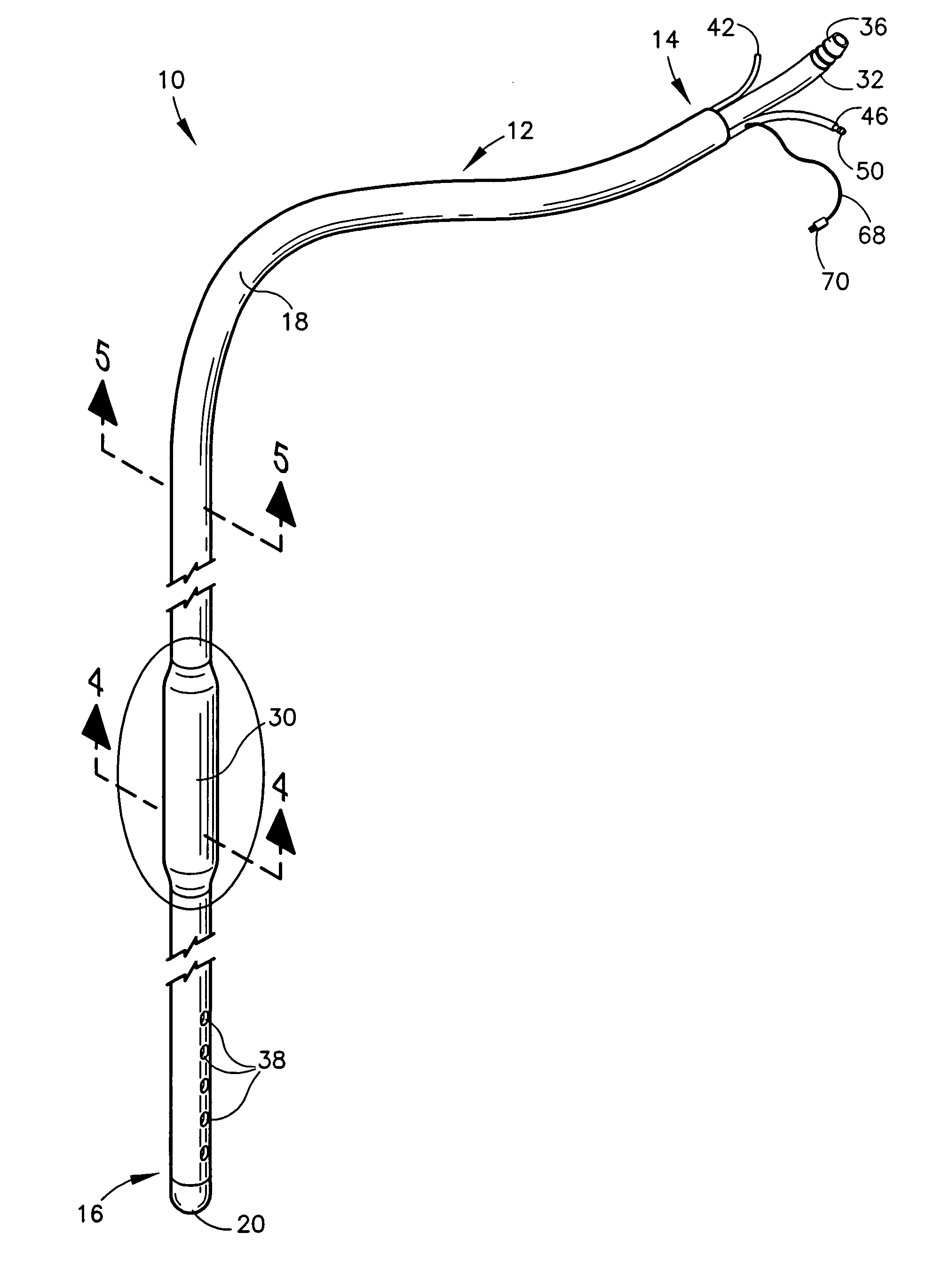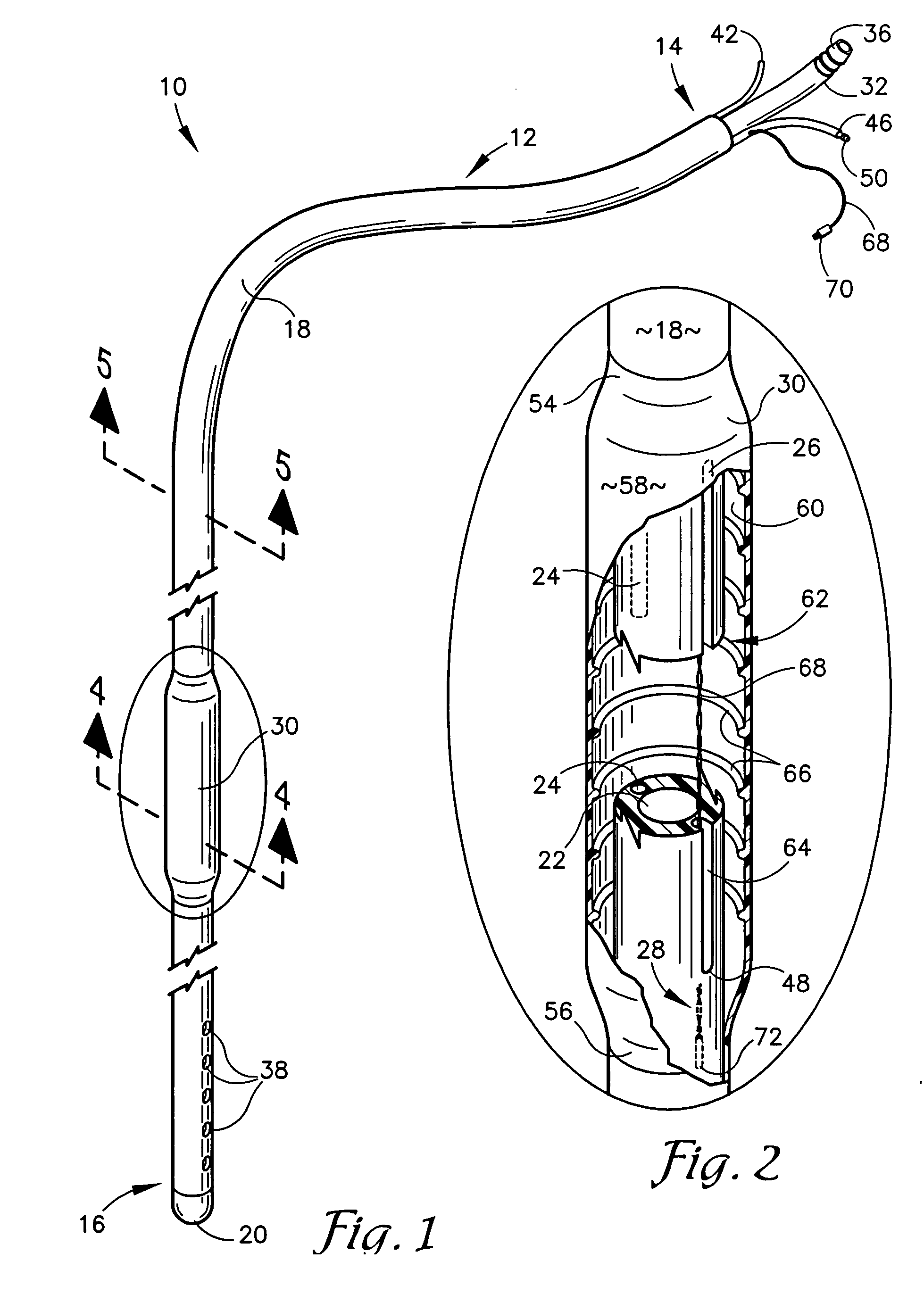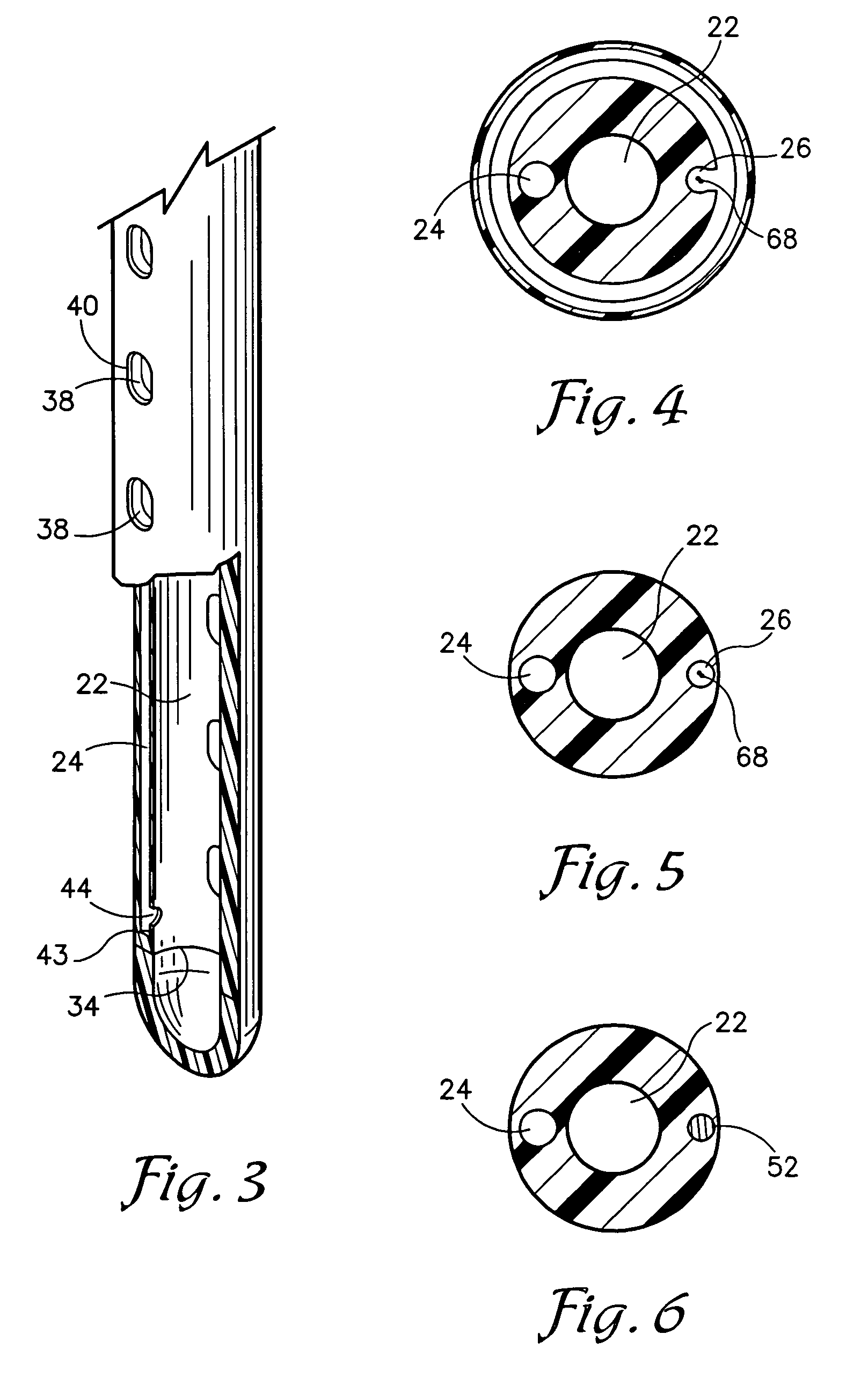Internally vented multi-function esophageal gastric tube
a gastric tube and multi-functional technology, applied in the field of esophageal gastric tubes, can solve the problems of reducing the efficiency of stethoscopes, and increasing the likelihood of significant gastric contents in patients, so as to relieve excessive negative pressure
- Summary
- Abstract
- Description
- Claims
- Application Information
AI Technical Summary
Benefits of technology
Problems solved by technology
Method used
Image
Examples
Embodiment Construction
[0021] As required, detailed embodiments of the present invention are disclosed herein; however, it is to be understood that the disclosed embodiments are merely exemplary of the invention, which may be embodied in various forms. Therefore, specific structural and functional details disclosed herein are not to be interpreted as limiting, but merely as a basis for the claims and as a representative basis for teaching one skilled in the art to variously employ the present invention in virtually any appropriately detailed structure.
[0022] Referring now to the drawing figures, the reference numeral 10 refers to an esophageal gastric tube apparatus in accordance with the invention. As best shown in FIGS. 1 and 3, the gastric tube 10 includes an elongated catheter or tube 12, having a proximal end 14 and a distal end 16 with a connecting sidewall 18. The proximal end 12 is generally open, whereas the distal end 16 is sealed or closed to form a tip 20.
[0023] The tube 12 includes a first ...
PUM
| Property | Measurement | Unit |
|---|---|---|
| Angle | aaaaa | aaaaa |
| Temperature | aaaaa | aaaaa |
| Pressure | aaaaa | aaaaa |
Abstract
Description
Claims
Application Information
 Login to View More
Login to View More - R&D
- Intellectual Property
- Life Sciences
- Materials
- Tech Scout
- Unparalleled Data Quality
- Higher Quality Content
- 60% Fewer Hallucinations
Browse by: Latest US Patents, China's latest patents, Technical Efficacy Thesaurus, Application Domain, Technology Topic, Popular Technical Reports.
© 2025 PatSnap. All rights reserved.Legal|Privacy policy|Modern Slavery Act Transparency Statement|Sitemap|About US| Contact US: help@patsnap.com



